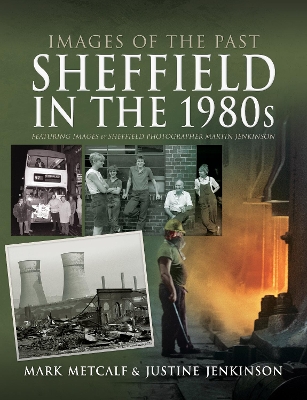Images of the Past
2 total works
The social, industrial and economic changes imposed on the Sheffield area during the 1980s are captured with remarkable clarity in this second Images of the Past book featuring the work of freelance photographer Martin Jenkinson (1947-2012). The former steelworker and adopted Sheffielder's knowledge of his fellow citizens' lives gave him a unique understanding, which he used to capture some incredible images of those troubled times.
In Sheffield in the 1980s the reader will find themselves drawn into remembering a decade of remarkable changes, some good but many for the worse. It was something that many northern England and Scottish cities experienced during this period, while at the same time, parts of south east England, especially the City of London, boomed. The gap between north and south became a chasm.
Jenkinson, who constantly sought ways to improve his skills, photographed people in their everyday lives at work and at play. However, where he excelled was his work with the trade union and labour movement in workplaces, on protests, demonstrations and pickets. His photographs in such situations create a political awareness that fills the page and forces the observer to seek to find out more.
So whilst some of the images in this book capture joy and laughter they also exhibit suffering. They provide a loud cry for social justice, a better world where unemployment is no more, poverty is swept away and everyone, black and white, male and female can enjoy a life where their talents are used for the collective improvement of all. Jenkinson's photographs are about a world we still must aim to obtain.
In Sheffield in the 1980s the reader will find themselves drawn into remembering a decade of remarkable changes, some good but many for the worse. It was something that many northern England and Scottish cities experienced during this period, while at the same time, parts of south east England, especially the City of London, boomed. The gap between north and south became a chasm.
Jenkinson, who constantly sought ways to improve his skills, photographed people in their everyday lives at work and at play. However, where he excelled was his work with the trade union and labour movement in workplaces, on protests, demonstrations and pickets. His photographs in such situations create a political awareness that fills the page and forces the observer to seek to find out more.
So whilst some of the images in this book capture joy and laughter they also exhibit suffering. They provide a loud cry for social justice, a better world where unemployment is no more, poverty is swept away and everyone, black and white, male and female can enjoy a life where their talents are used for the collective improvement of all. Jenkinson's photographs are about a world we still must aim to obtain.

